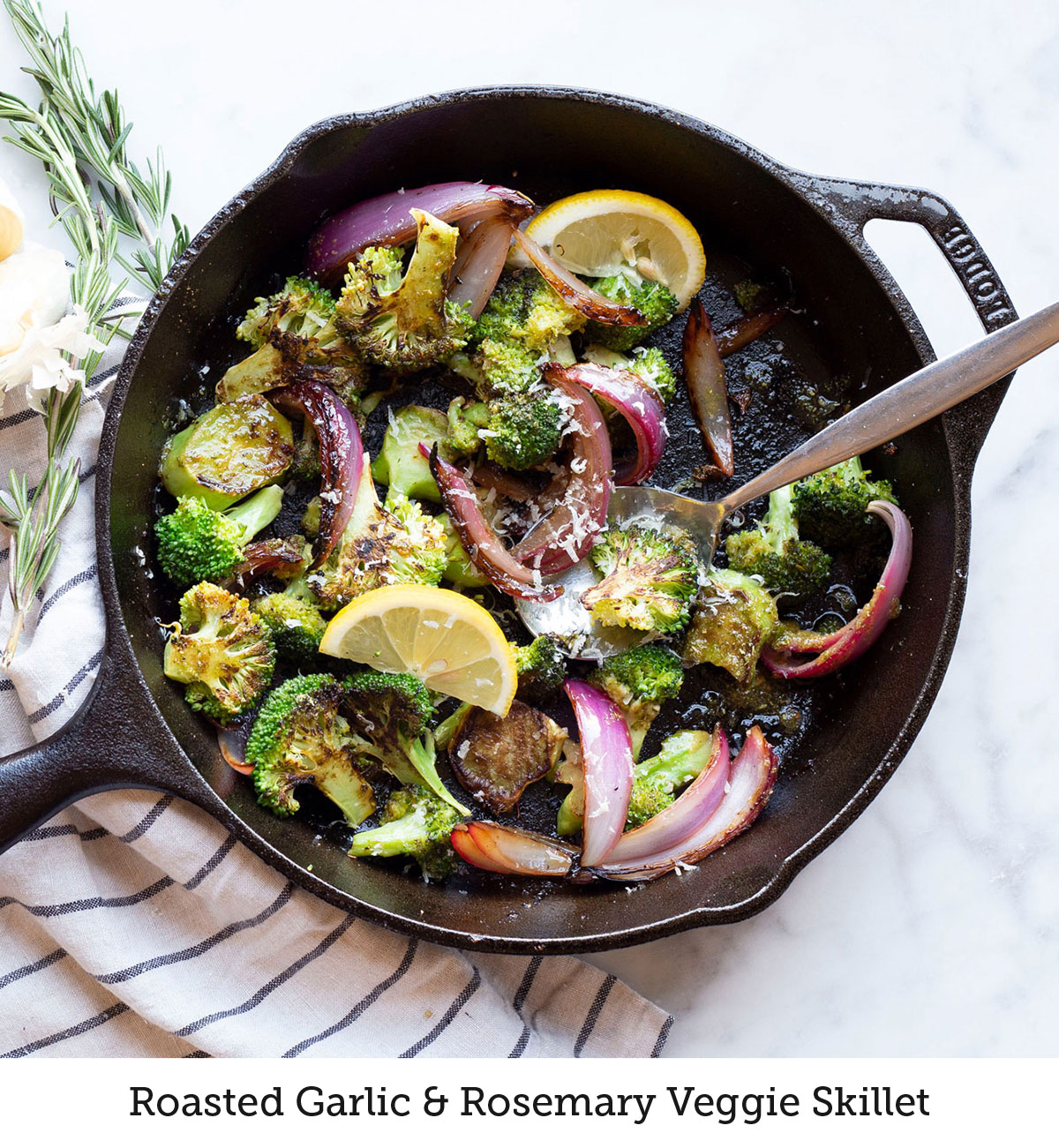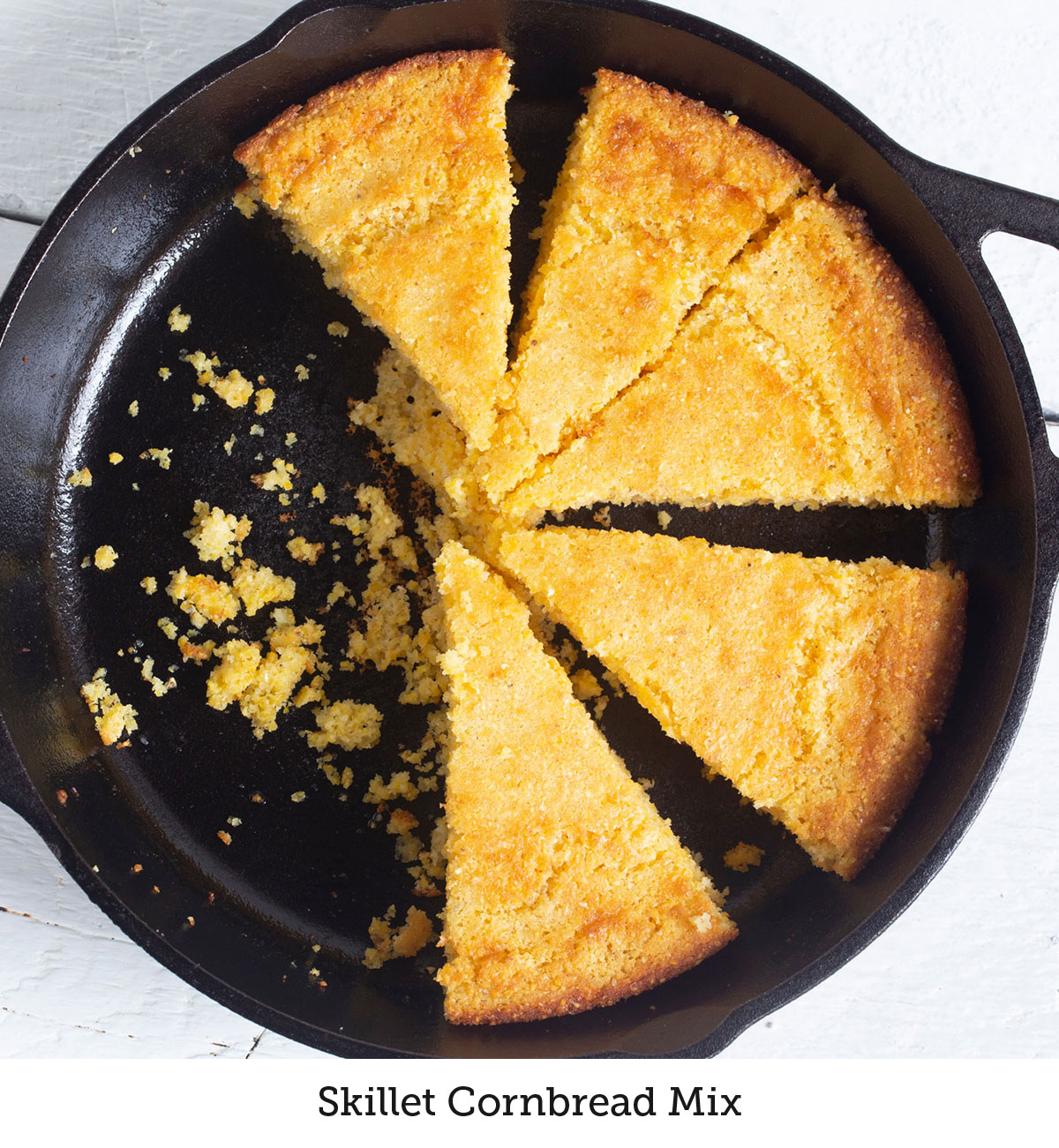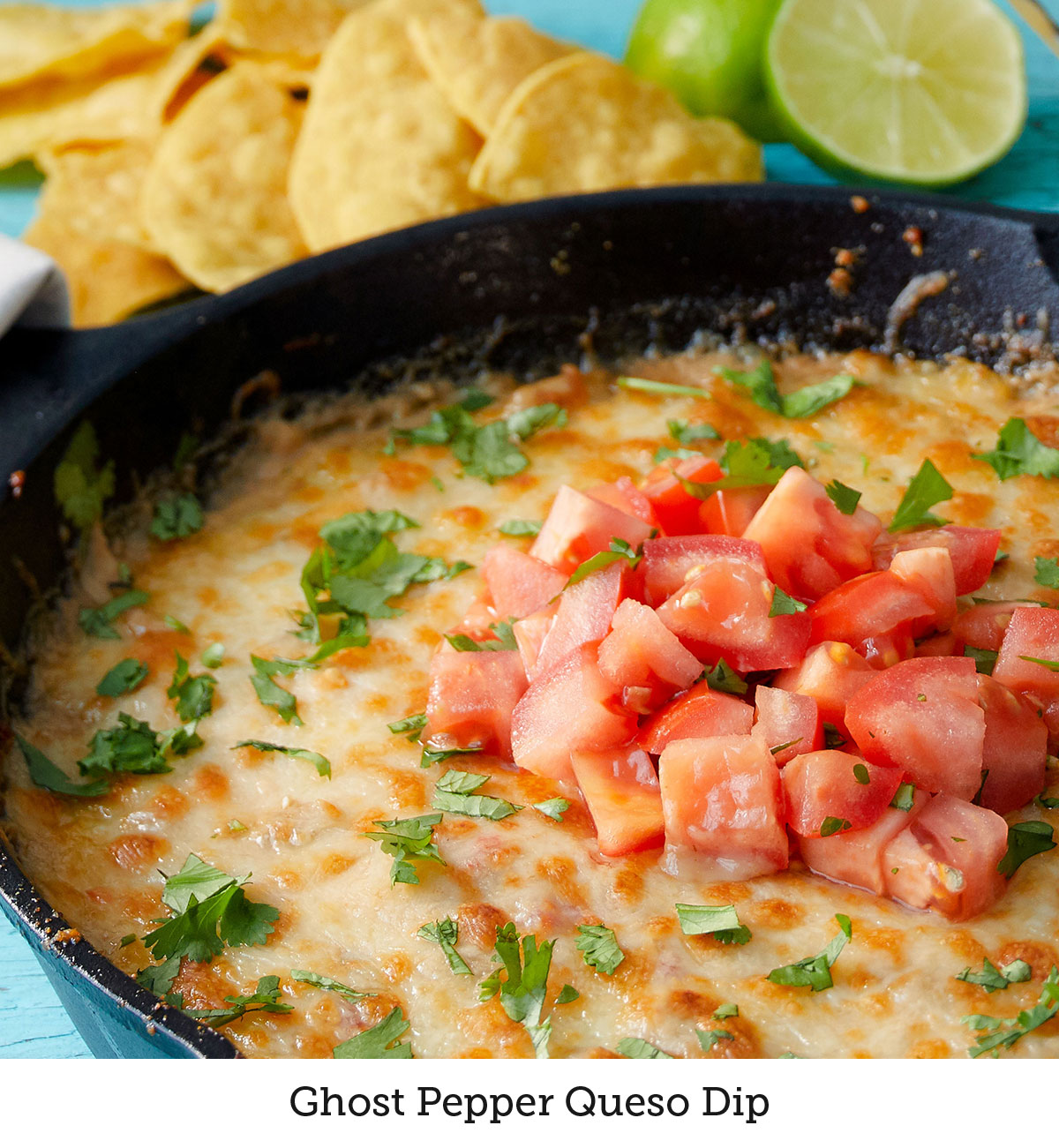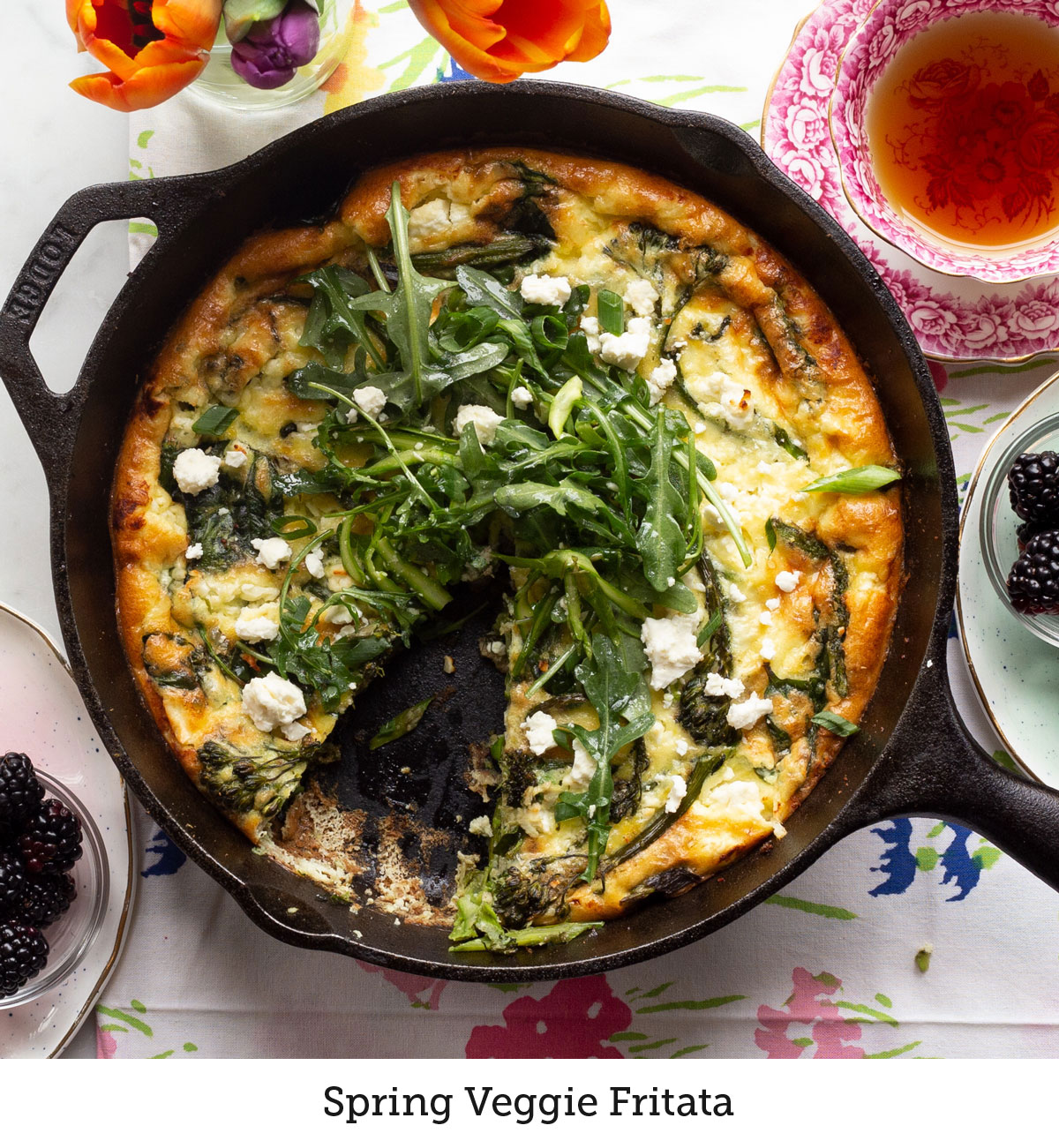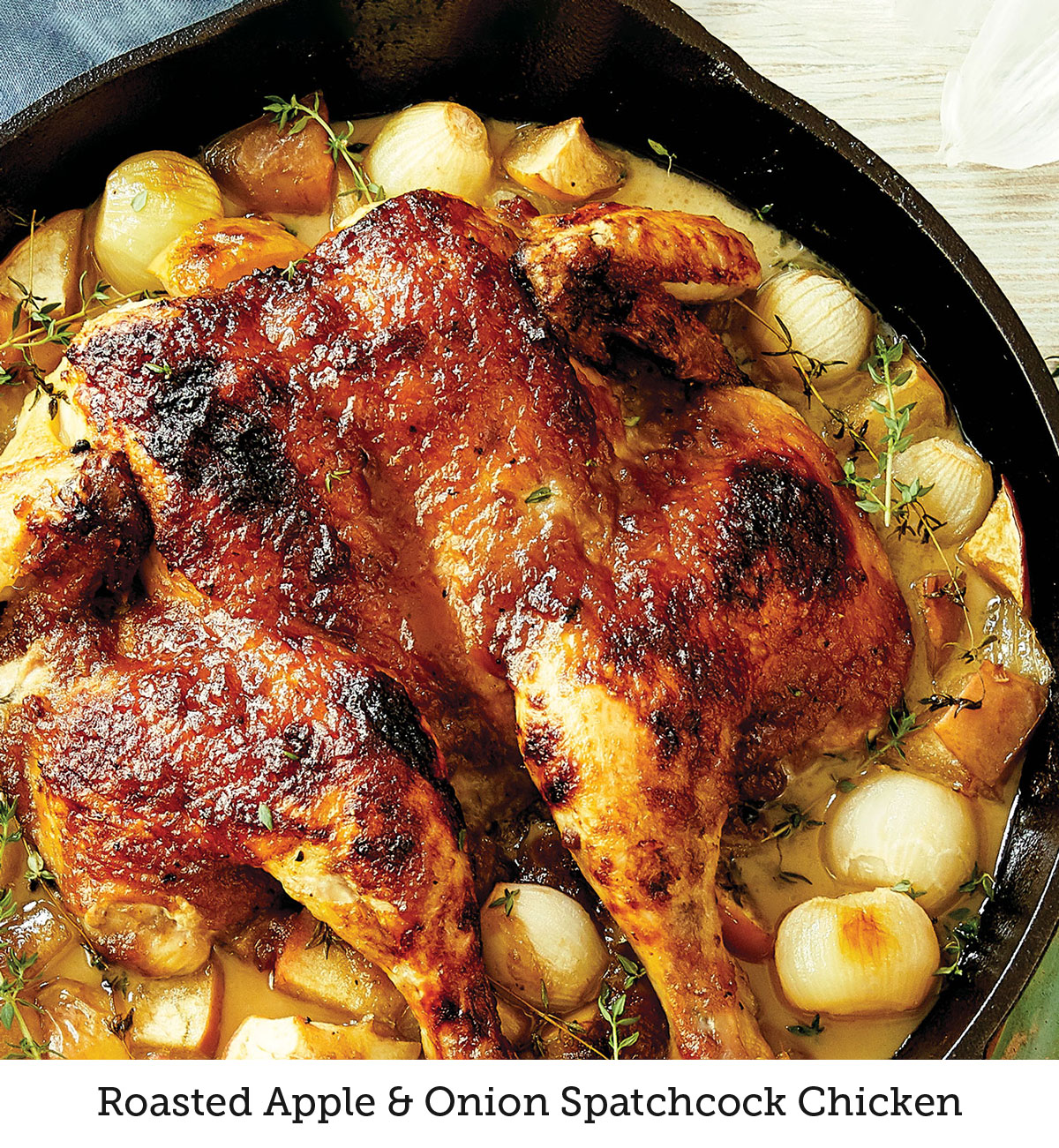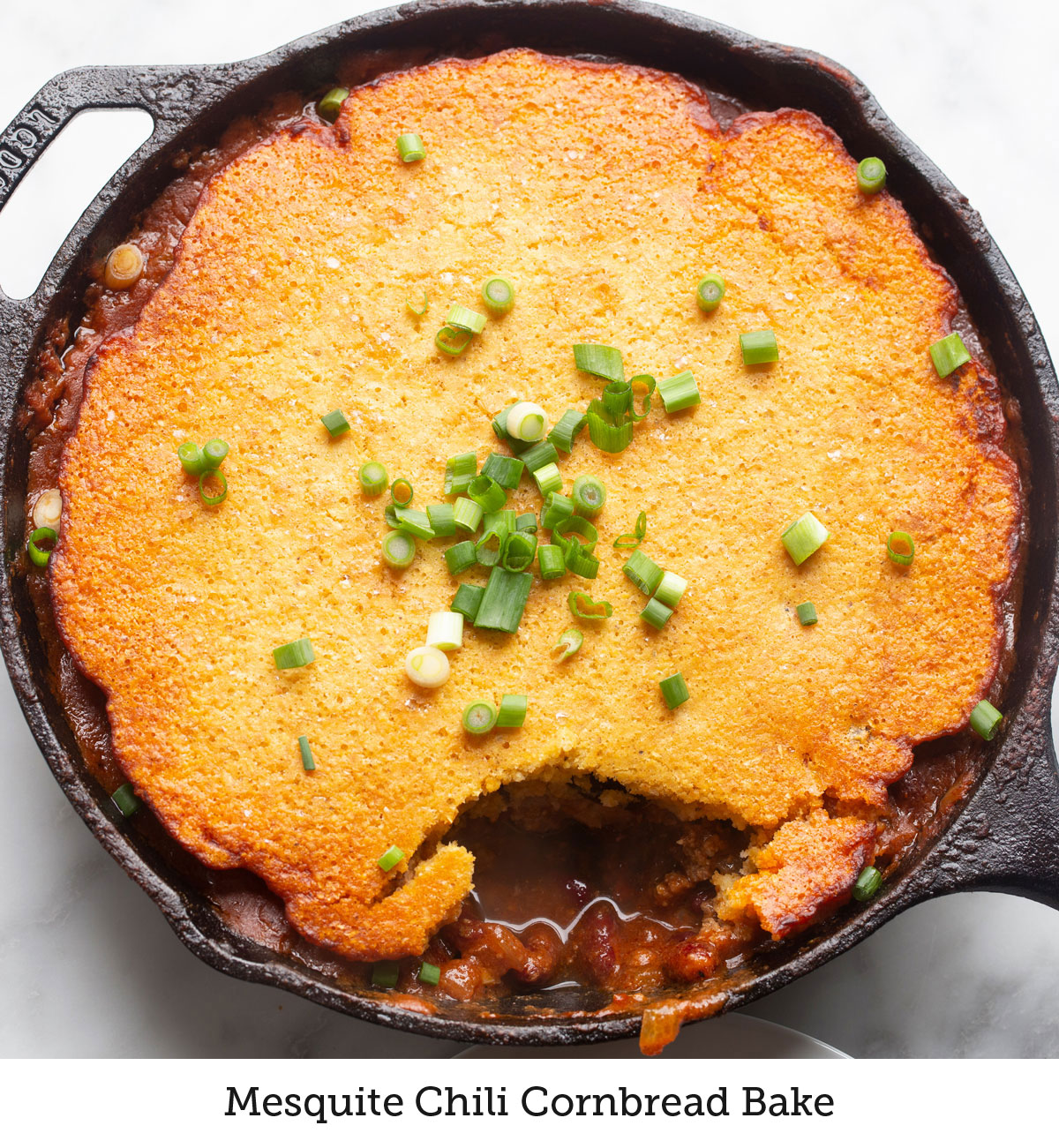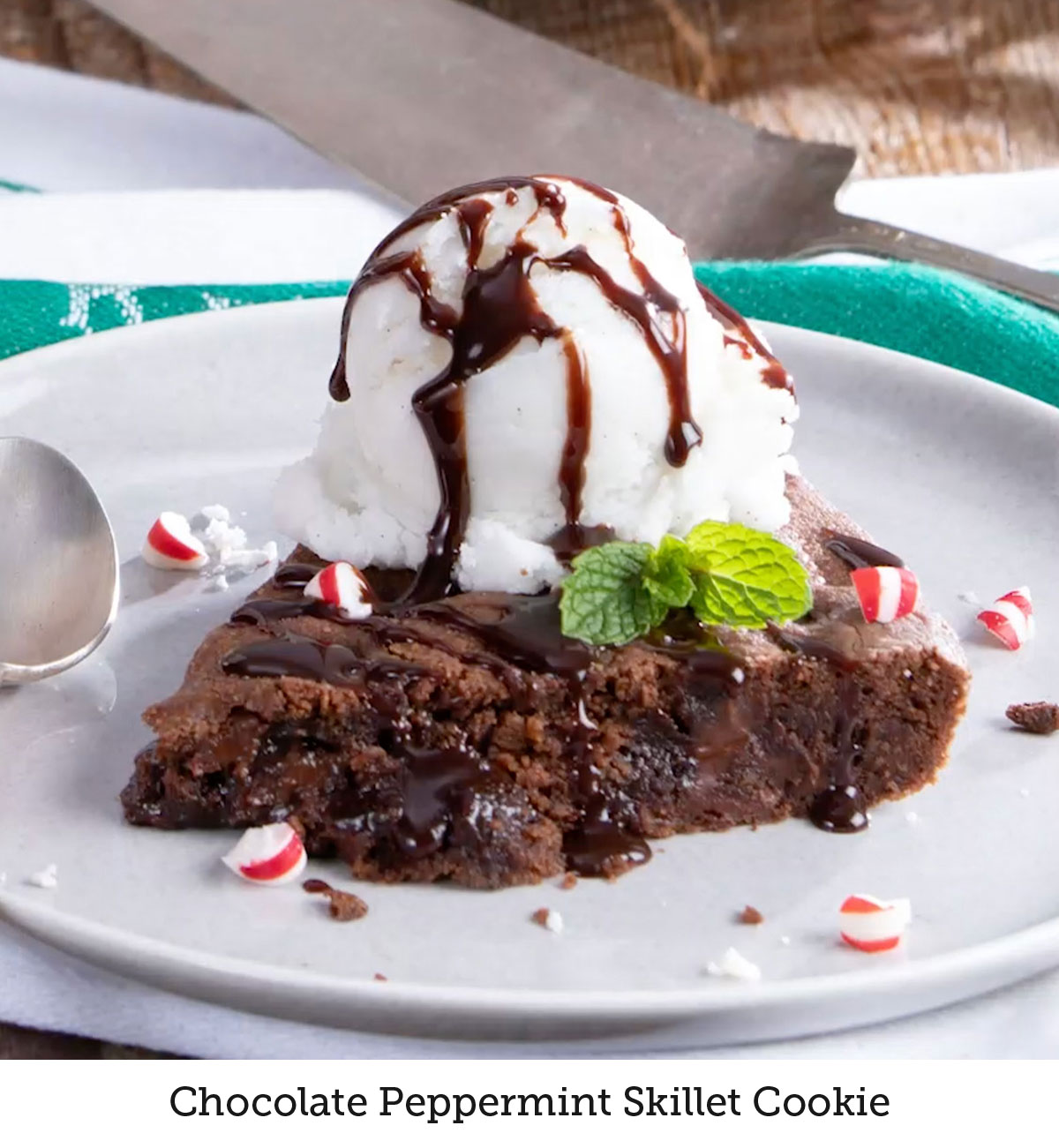Cast iron cooking inspires a fanatic foodie following, but are you still wondering what the big deal is? Today I’ll share one of my favorite cooking styles with you, and we’ll discuss how to choose a cast iron skillet, when to use it, how to care for it, and send you off with a few recipes to get you started.
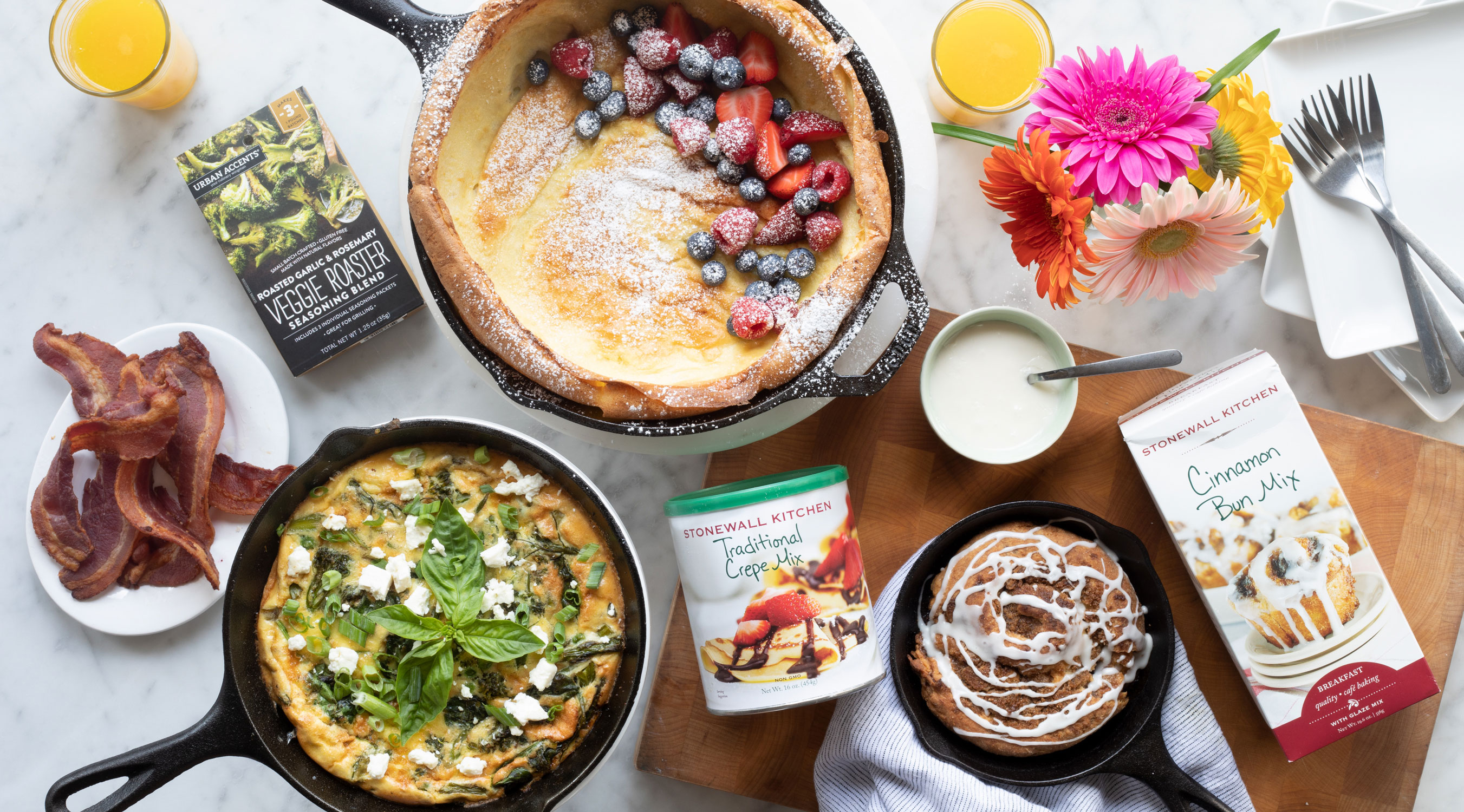
WHY CHOOSE A CAST IRON?
The mystique of cast iron cookware being passed down through generations carrying stories and seasonings are fun to read about, but the reality is that most folks just buy (or receive) a brand new piece. There are so many options, it might feel intimidating to get started. Before you run out and spend a small fortune, think about what you’d like to cook in your new pan and how often you’ll use it. If you’re hoping to use it for steaks here and there or cornbread every now and then, a classic, super-affordable black skillet is an excellent choice. (We love Lodge brand - made in Tennessee!) If you’re a regular home chef and like to braise meats weekly, or you’d rather not worry too much about routine maintenance, you might want to invest in an enameled option. Enameled cast iron cookware is coated in a ceramic surface (non-porous) that makes clean up a little easier.
Devoted cooks love to cook with cast iron and with a little attention to surface care, it’s almost indestructible. It can go from stovetop to oven, and even to grill and campfire with ease! It holds heat consistently which makes it excellent for baking and deep frying, but the high heat potential means it can also sear steaks and brown veggies better than almost anything else. This recipe for seared & roasted broccoli will make broccoli your new favorite food: Rosemary Roasted Broccoli with Red Onions.
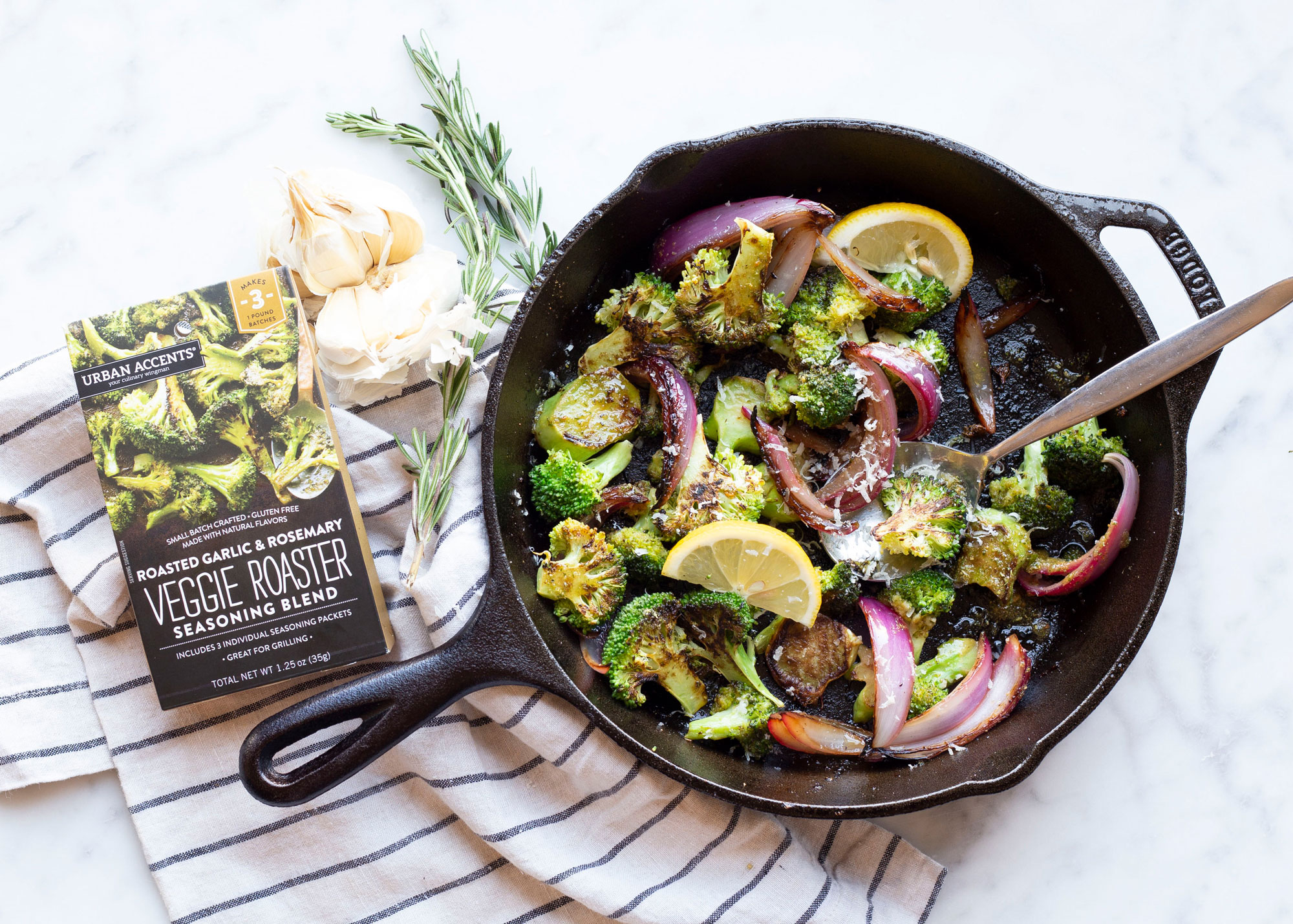
When picking your cast iron pan, think about what you’d like to do for up-keep. If you’d rather have cast iron cookware that you can clean with soap, enameled cast iron may be more your speed! You’ll get the serious heat retention like you would with a porous pan while being able to wash with soap too. Whatever your preference, I use both all the time! Also, if you’re trying to decide between two sizes, level up. I always like to say: you can cook a small thing in a big pan, but you can’t cook a big thing in a small pan.
HOW TO CLEAN YOUR CAST IRON
Do you avoid using your cast iron skillet because you’re intimidated by the thought of cleaning it? Fear not! I’m here to simplify the process! If you remember anything, remember this: when cleaning your cookware water is not the enemy, soap is the enemy (kinda).
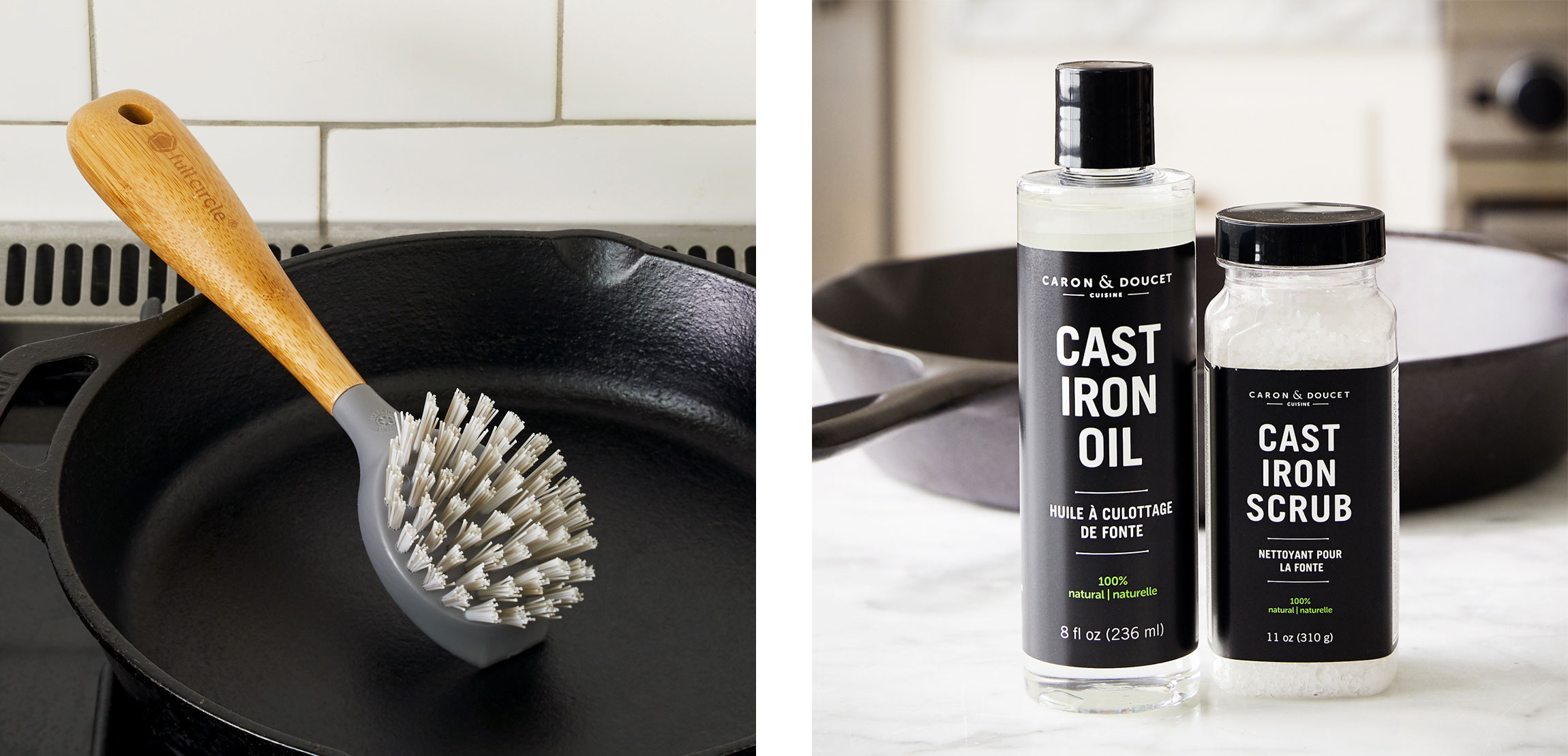
The main idea is to protect the natural surface that builds up over time. You can use water to clean it, but harsh dish soaps will strip away the natural layer of lubrication. Oftentimes, you can just wipe the skillet clean of crumbs and leftover bits with a dry towel. I recommend using this method as much as possible, but sometimes you’ve got a greasy, sticky mess on your hands.
Here’s what I do when I need a little extra cleaning power:
Remove any food from the skillet by scraping and wiping it out with a damp towel. Fill it about ⅔ full with water. Put it back on the stove and bring the water to a light simmer - this will loosen almost anything left in the skillet. After a few moments of simmering, carefully pour most of the water out of the skillet. Use this Cast Iron Brush to scrub anything that’s left. If there are some really stubborn bits, you can add a few tablespoons of Cast Iron Scrub to the skillet to use as an abrasive.
To season the skillet after cleaning, dry it with a towel and place it back on the burner over medium heat to dry fully. Evaporating any moisture left on the porous surface of the skillet will prevent rust because iron + water = rust. It should only take a few moments to fully dry and the skillet will have a dull, matte finish. While it’s still hot (and the pores are still open), add 1 tablespoon of a neutral, high-temp oil (Cast Iron Oil, Avocado Oil, and Grapeseed Oil all work well) and use a paper towel pinched with tongs to spread the oil around the entire surface of the skillet - especially the cooking surfaces. This will fill the pores with grease and create a protective layer to keep any moisture out.
And here’s the deal: It’s okay to use soap every once in a while, just not every time. If you’ve got the kind of terrible mess that really needs it, use a tiny little dash of soap! If your coating has been built up and renewed over time, a little soap isn’t going to hurt it.
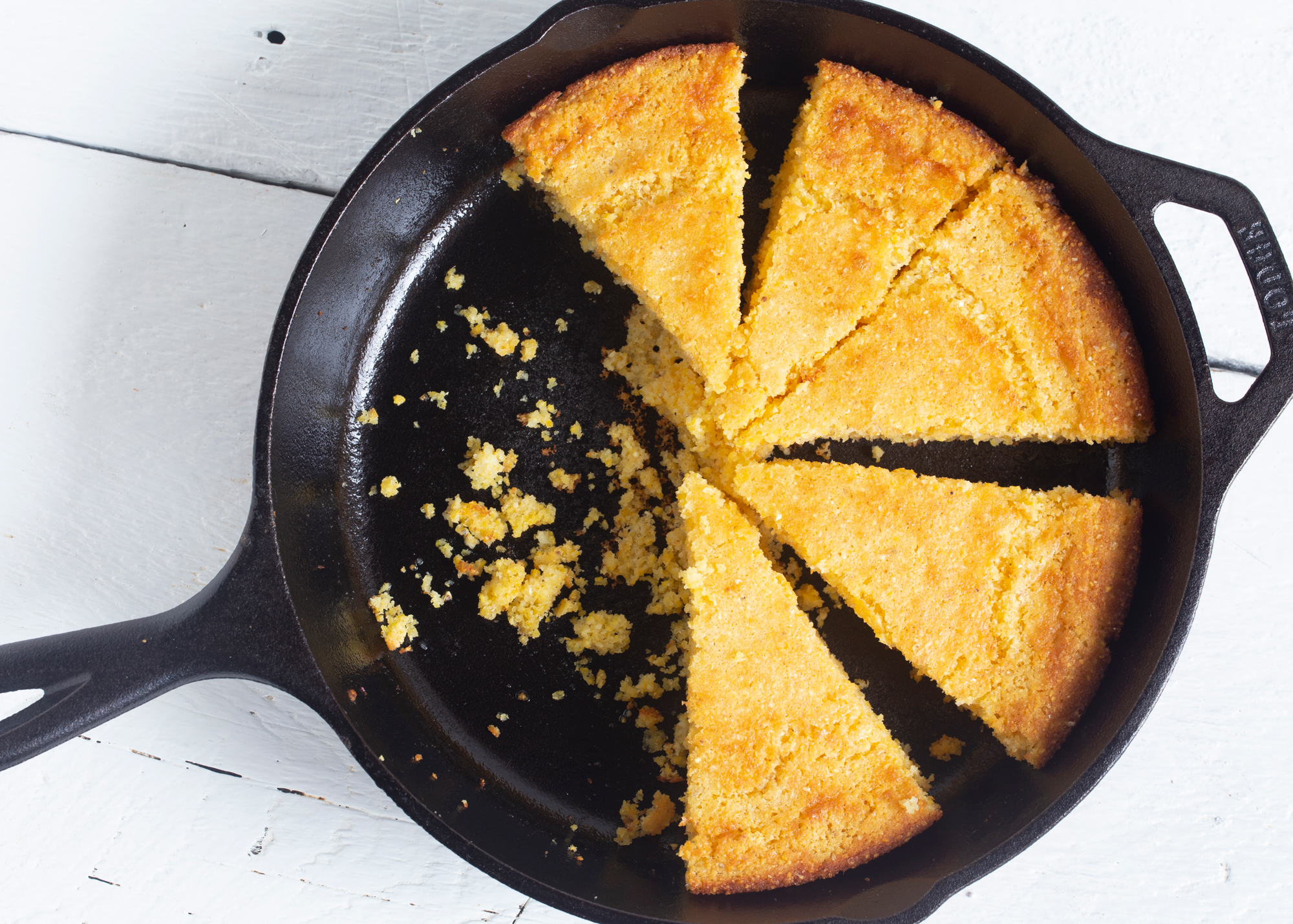
One of my favorite easy ways to season my cast iron skillet is to make skillet cornbread. I learned this method growing up in Alabama, and while I enjoy the sweet, cakey Midwestern cornbread, Southern skillet cornbread is my preference. It’s a buttery blank slate made with a thick, crunchy, crust perfect for dragging through hearty stocks and sauces at the bottom of your bowl. You get the crust by heating oil in the skillet before pouring in the batter - this fries the outside to a rich, golden brown. Stonewall Kitchen’s Cornbread Mix works in this method - just watch it closely in the last 8-10 minutes of baking to make sure it doesn’t burn. To make skillet cornbread:
- Heat the skillet in the oven with a few tablespoons of cooking oil before adding the batter. You want the oil hot enough to sizzle and spit when you flick a few drops of water into it.
- Carefully pour the batter into the skillet - it will bubble and begin to fry around the edges. Bake as normal, and you’ll know it’s ready when you can poke a toothpick down through the middle, and it comes up clean.
- Give it a few minutes to cool in the skillet before cutting or serving. In my family we carefully flip the whole ‘pone’ or circle of cornbread out onto a plate before slicing and serving with the crispy golden side up.
The best part of this baking and serving method- well, after the cornbread itself - is that you’re left with a perfectly seasoned skillet with no crumbs - just wipe it out with dry cloth or paper towel and put it away. Boom. I always love it when I can feed two birds with one seed!
MY FAVORITE CAST IRON RECIPES
Now that you know how to pick out, clean, and season cast iron pan – let’s chat about some yummy recipes! Our Ghost Pepper Queso Dip is a great option that utilize the heat retaining qualities of a cast iron, allowing the dip to stay warm during serving. You can serve directly from the hot skillet - but be sure to cool it for a few minutes first and use an oven mitt, kitchen towel, or Silicone Hot Handle Holder to keep folks from grabbing the handle while it’s still hot!
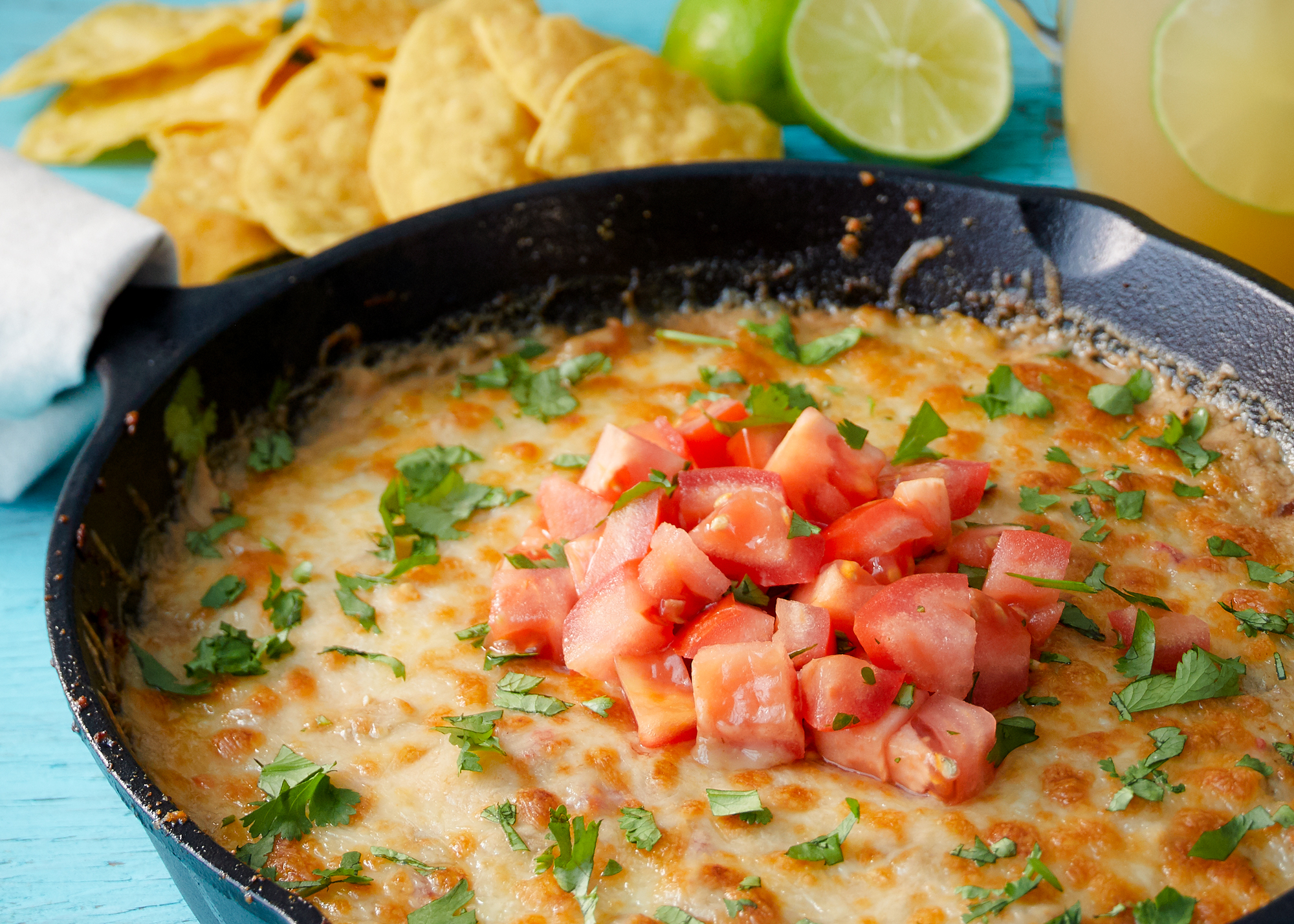
Cast Iron cooking isn’t just for baking or steak nights! You can use to for breakfast, too. Fry some bacon, bake some Cinnamon Buns, or whip up a classic Dutch Baby Pancake. Once your skillet has been cared for consistently and developed a nice layer of seasoning, you’ll even be able to use it to make eggs and frittatas. Try this veggie-packed option: Spring Veggie Frittata.
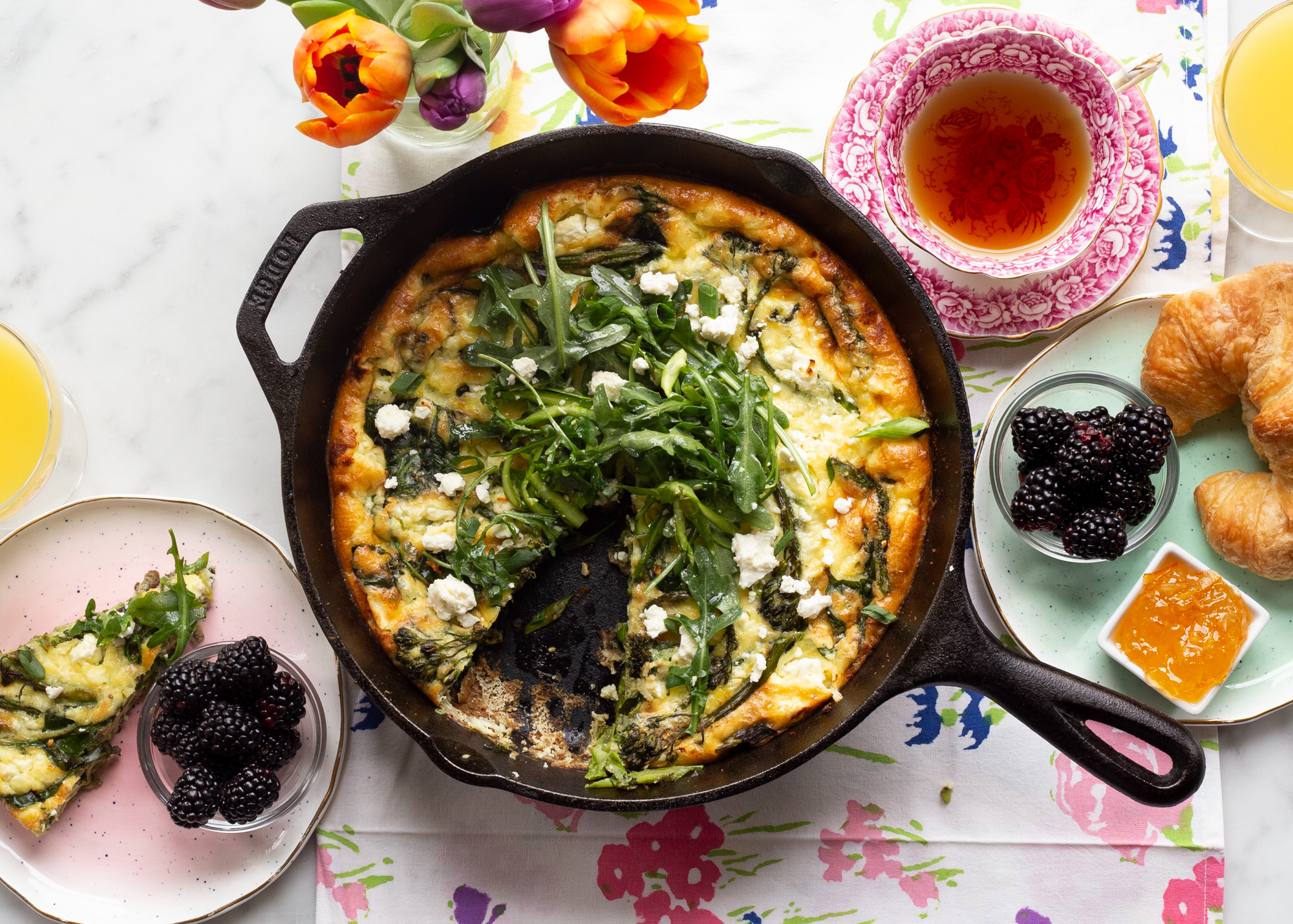
Cast iron cookware is all about versatility in the kitchen (or even around the campfire), and to showcase everything it can do, try these two recipes:
- Mesquite Chili Cornbread Bake: cook up your chili in the skillet on the stovetop, cover with cornbread batter, and bake until the cornbread is set. Two classics combined into one, what’s not to love?!
- Roasted Apple and Onion Spatchcock Chicken: brown the chicken skin-side-down in your skillet on the stovetop, and then flip it over, glaze with sauce, and roast it over onions and apples in THE SAME SKILLET. It’s a classic for a reason!
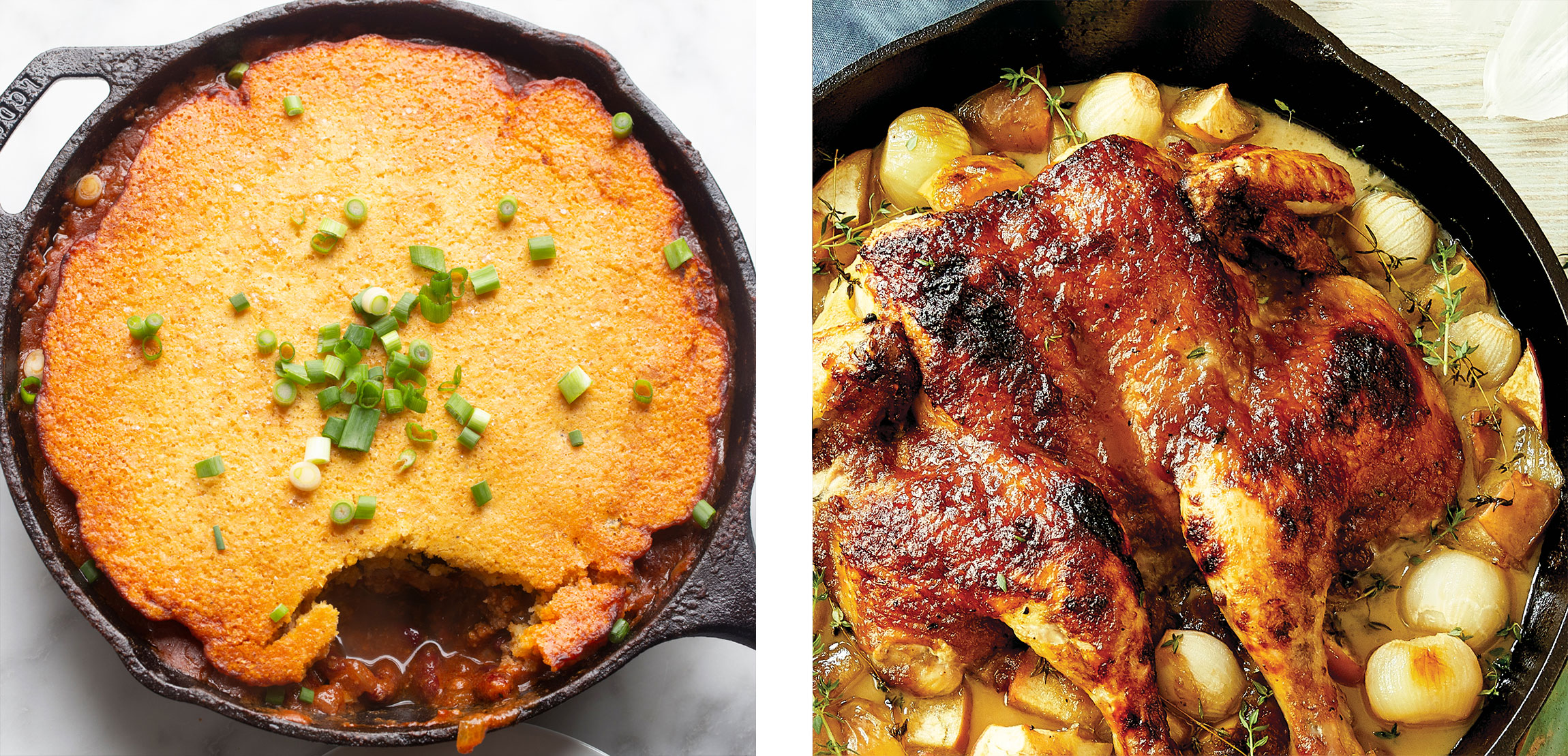
You can also wow folks with your dessert cast iron skills! Channel your favorite restaurant from the early 2000s and make this Chocolate Peppermint Skillet Cookie at the end of your next dinner gathering. There is nothing more fun than scooping up warm cookie and melty ice cream out of shared dessert. Next time you’re craving a s’more, try our recipe for S’machos (s’mores + nachos = Smachos). Layer graham crackers, butter cookies, and marshmallows in your skillet and put it under the broiler for a few minutes. Top with any of the Stonewall Kitchen Dessert Sauces and all your favorite toppings and go to town!
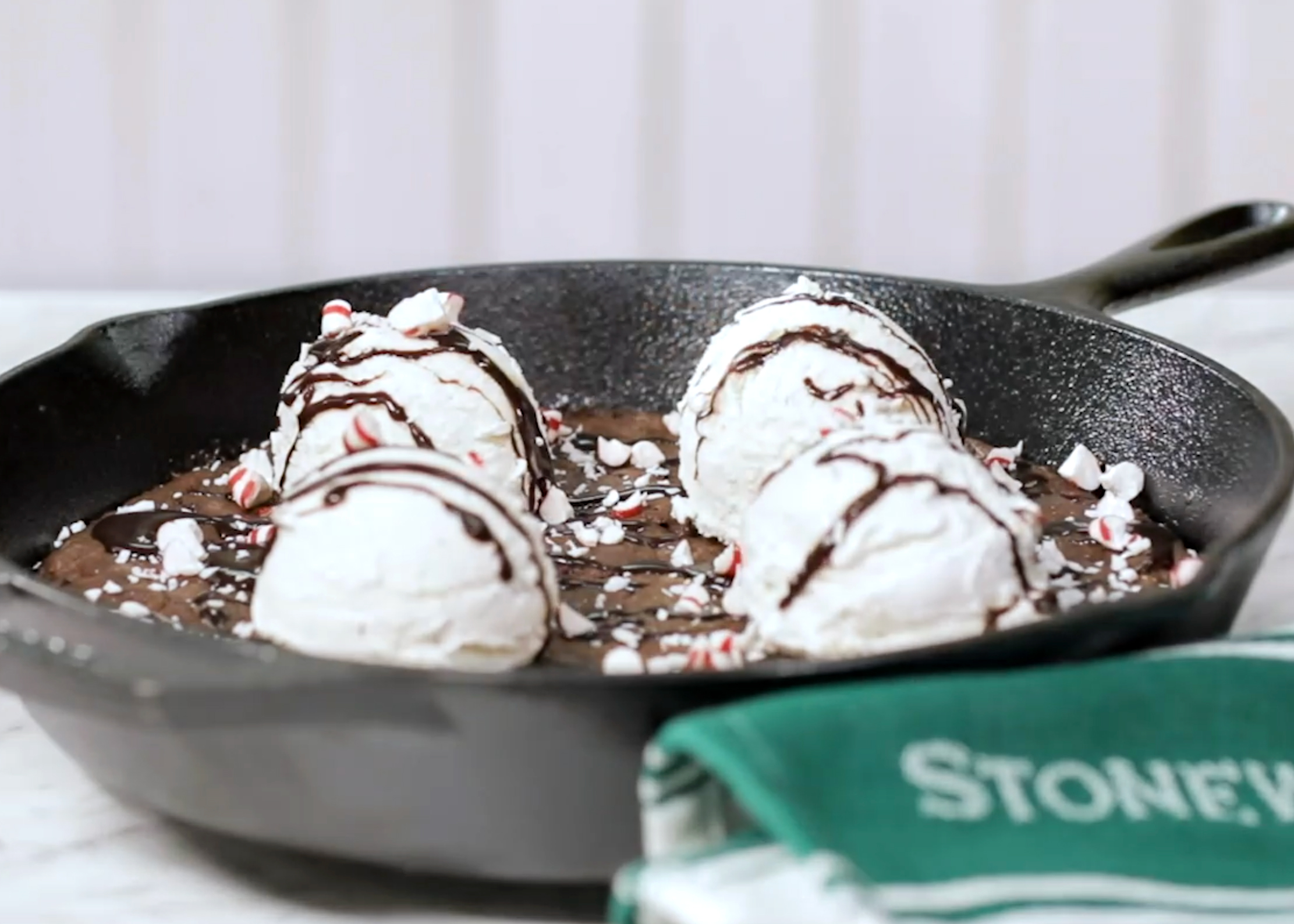
OUR FAVORITE RECIPES


